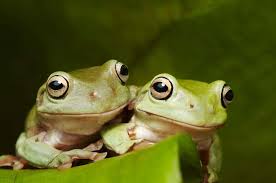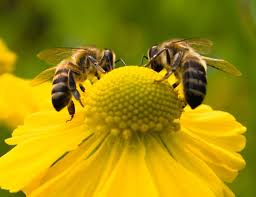 Birds do it. bees do it. frogs, plants, fungi do it. Most living creatures have sex.
Birds do it. bees do it. frogs, plants, fungi do it. Most living creatures have sex.
Why do they do that?
Sexual reproduction grabs the fastest path to long-term survival in an ever changing world. It takes energy, but going through that tangled process of mixing genetic material from one generation to the next is worth the effort. It is the most efficient way to make a mixed array of DNA blueprints for facing life’s uncertainties. It also accelerates repair of damaged DNA which can range as high as twenty to sixty thousand injuries per day in mammalian cells such as ours.
This much I’ve learned from a life-long interest in biology focused on genetics.
But how is reproduction by means of sex accomplished?
These thoughts ran through my mind as I wandered through a Vermont woodland one fine spring day.
We humans know something of how sex works for us to spawn the next generation—basically, XX chromosomes for females versus XY chromosomes for males, with the accompanying paraphernalia. Male and female allure one another through sight, smell, taste, sound, and feel. Full attraction attained, male inserts penis into female vagina and delivers its genome packaged in sperm to join female genome in egg. Gender identity does not always match anatomical male-female differences. Same-sex allurement happens but cannot lead to procreation—we cannot reproduce our entire being by cloning, not naturally.
But ours is not the only way. What of nature’s other creatures?
 Walking by a lily-padded pond, I saw a tiny speckled frog perched atop a floating log. What’s with frogs? How do they strategize sex? I’ve heard their nighttime courtship calls. I know they hatch as tadpoles from fertilized eggs in water and develop from tadpoles to full grown adults. But unlike mammals, frogs can have different kinds of sex chromosomes: some species have XX females and XY males, others have more homologous chromosomes called ZW and ZZ, and some of these little hoppers, such as the African reed frog, can defy the differential chromosome rule by switching sex when timely. Confronted with a shortage of males, females can turn into males and redress the balance. If need be, males can switch the other way around. Their sex chromosomes combine both male and female potential. Such frogs are born with both ovarian and testicular tissue, but only one type develops to function at any one time. No one yet knows just how these changes are perpetrated, but some kind of long distance signaling is probably involved.
Walking by a lily-padded pond, I saw a tiny speckled frog perched atop a floating log. What’s with frogs? How do they strategize sex? I’ve heard their nighttime courtship calls. I know they hatch as tadpoles from fertilized eggs in water and develop from tadpoles to full grown adults. But unlike mammals, frogs can have different kinds of sex chromosomes: some species have XX females and XY males, others have more homologous chromosomes called ZW and ZZ, and some of these little hoppers, such as the African reed frog, can defy the differential chromosome rule by switching sex when timely. Confronted with a shortage of males, females can turn into males and redress the balance. If need be, males can switch the other way around. Their sex chromosomes combine both male and female potential. Such frogs are born with both ovarian and testicular tissue, but only one type develops to function at any one time. No one yet knows just how these changes are perpetrated, but some kind of long distance signaling is probably involved.
Some fish do likewise, just to balance the sexes.
Look up to the sky, the birds up there. They have two sexes, but, unlike mammals, it’s the female who carries two different sex chromosomes (ZW) while the male has identical ones (ZZ). Through fertilization, genetic union, and the special two-step process of genetic recombination called meiosis, female determines the sexual identity of offspring.
 Bees bustle within the fragrance of spring flowers. For these busy little buzzers, only females develop from eggs fertilized by sperm. Males, oddly enough, develop from unfertilized eggs that are derived either from the queen bee or from a rather rare so-called laying worker bee. Thus, a male genome, with just one set of chromosomes coming from a female egg, is half the value of a new born female with two sets of chromosomes, one from the female parent plus one from the male parent. The doubly endowed females go out and work for a living; the males are drones who can’t even sting or forage. Being fed by worker females, a drone’s purpose in life is to fertilize some of the queen’s eggs—whereupon he expires in the act, leaving part of his innards behind. Usually a hive generates just one queen by nurturing a selected female with a special diet of royal jelly the first two weeks of life. This special feeding, denied to ordinary workers, is necessary for female organ development.
Bees bustle within the fragrance of spring flowers. For these busy little buzzers, only females develop from eggs fertilized by sperm. Males, oddly enough, develop from unfertilized eggs that are derived either from the queen bee or from a rather rare so-called laying worker bee. Thus, a male genome, with just one set of chromosomes coming from a female egg, is half the value of a new born female with two sets of chromosomes, one from the female parent plus one from the male parent. The doubly endowed females go out and work for a living; the males are drones who can’t even sting or forage. Being fed by worker females, a drone’s purpose in life is to fertilize some of the queen’s eggs—whereupon he expires in the act, leaving part of his innards behind. Usually a hive generates just one queen by nurturing a selected female with a special diet of royal jelly the first two weeks of life. This special feeding, denied to ordinary workers, is necessary for female organ development.
Working female bees gather food for the colony. They are the ones who sting. I wonder why, since death ensues thereafter. Perhaps it is a sacrificial act in protection of the hive. Alas, those female workers produce only male offspring. It is the queen of the lot who makes more females. She must stay healthy to keep the whole colony replenished with a proper gender balance.
My brother kept bees. Sometimes the queen escaped its hive leading the colony elsewhere. If those renegades settled on a tractable bush nearby, I’d cover up in overalls, netted hat and gloves, give that bush a shaking, dislodge them all into a wide-mouth container, close the lid, then carry them back to my brother’s hive for the fee of fifty cents. I did not get stung, nor did I ever earn much.
~~~
*Excerpt from an essay published in The Best of the Burlington Writers Workshop, 2016

